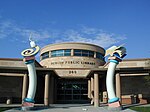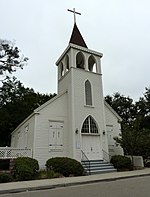Forest Home Farms
Companies based in Contra Costa County, CaliforniaFarms on the National Register of Historic Places in CaliforniaHistoric districts on the National Register of Historic Places in CaliforniaHistoric farms in the United StatesHistoric house museums in California ... and 8 more
Houses in Contra Costa County, CaliforniaHouses on the National Register of Historic Places in CaliforniaItalianate architecture in CaliforniaMuseums in Contra Costa County, CaliforniaNRHP infobox with nocatNational Register of Historic Places in Contra Costa County, CaliforniaSan Ramon, CaliforniaVictorian architecture in California

The Forest Home Farms is a 16-acre (6.5-hectare) municipal historic park located in San Ramon, California. In 1997, Ruth Quayle Boone bequeathed the land and all buildings on it to the City of San Ramon for use as a park and historical site in memory of her husband, Travis Moore Boone. After Ruth Boone's death in 1998 at the age of 94, the City expanded the memorial to include Ruth, in honor of her generosity to the people of San Ramon and in recognition of the contribution women made to agriculture in the San Ramon Valley.
Excerpt from the Wikipedia article Forest Home Farms (License: CC BY-SA 3.0, Authors, Images).Forest Home Farms
San Ramon Valley Boulevard,
Geographical coordinates (GPS) Address Nearby Places Show on map
Geographical coordinates (GPS)
| Latitude | Longitude |
|---|---|
| N 37.735 ° | E -121.95 ° |
Address
The Boone House
San Ramon Valley Boulevard 19953
94583
California, United States
Open on Google Maps





